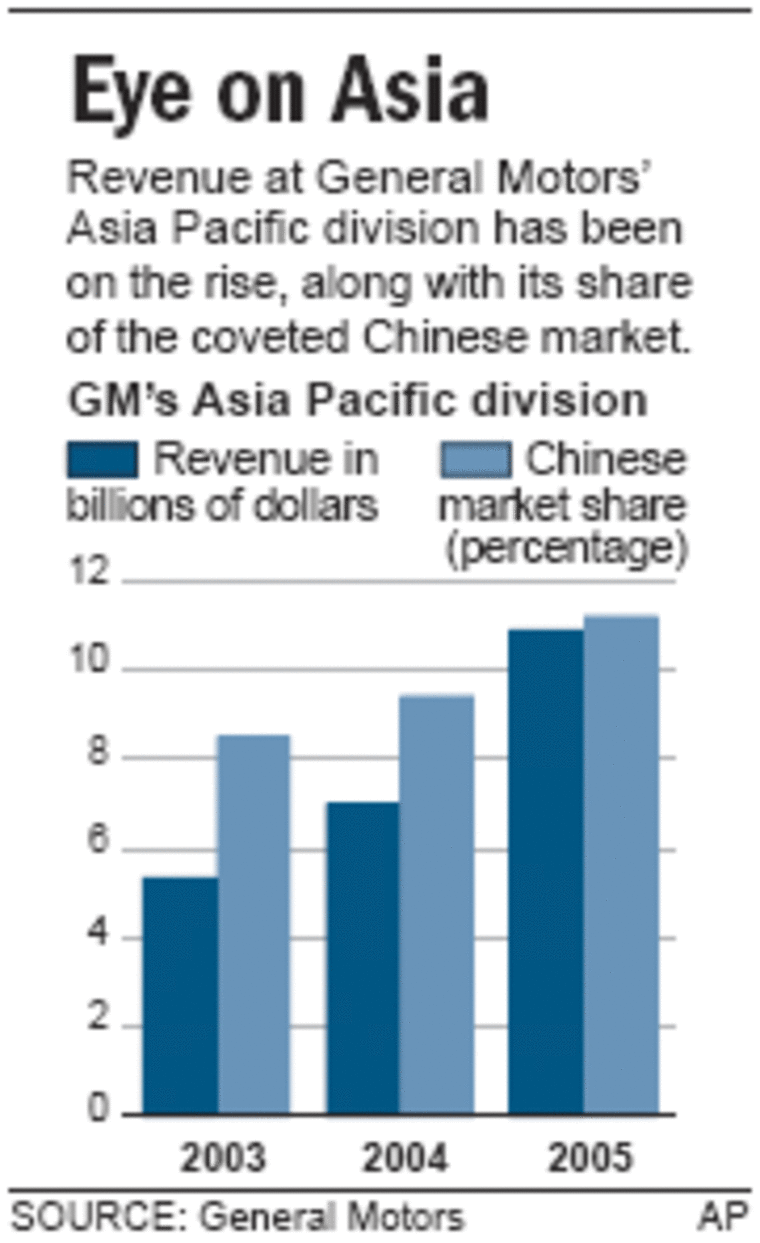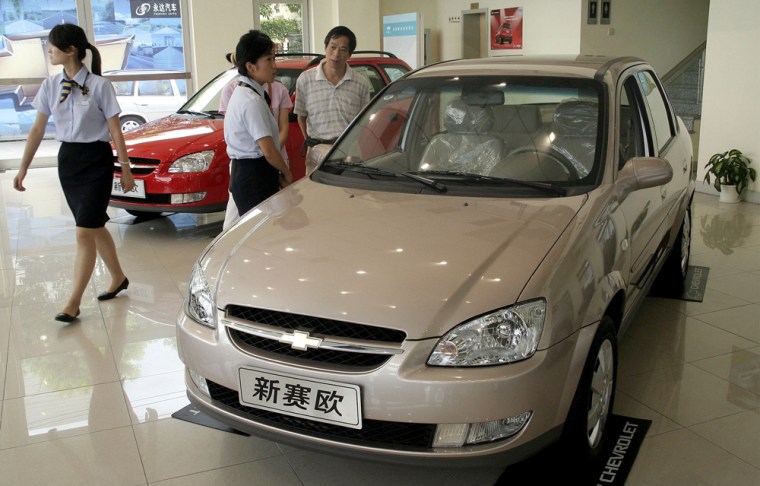It has been a difficult few years for U.S. automakers, with the nation’s Big Three — General Motors, Ford and Chrysler — taking their fair share of knocks.
The latest blow came in late October when all three companies reported losses for the third quarter.
Chrysler posted an operating loss of $1.5 billion, while Ford said it lost an astounding $5.8 billion, weighed down by the costs of its massive restructuring plan. The only ray of hope came from GM, which initially said it lost $115 million and then revised that Tuesday to $91 million, which was much smaller than expected.
But despite the pain, observers say the Big Three appear to be finding their feet in a number of areas, including vehicle quality and stronger sales, particularly in Asia, and there are also signs that the restructuring plans underway at GM and Ford are taking hold.
“GM in particular — I think we are seeing good news from them,” said Kevin Reale, research director for AMR Research, an industry consulting company.
The world’s largest automaker is the best example of how the industry is changing for the better, said Reale. The company’s plan to restructure, which includes massive job cuts and plant closures, is beginning to bear fruit, shown most recently by GM’s smaller-than-expected quarterly loss.
Other industry improvements include increasing the use of digital tools to reduce the time it takes to bring a new vehicle to market, improved collaboration with suppliers to cut costs and moving into emerging marketplaces like China, Reale said.

“We are also seeing major changes in quality at GM,” he said, noting that GM’s warranty payout costs have declined over the past three quarters, improving its position against Japanese rivals like Honda and Toyota, long known for quality and reliability.
Indeed, GM and Ford saw their newest models placed high in Consumer Reports magazine’s recently-released list of the most reliable vehicles for 2007.
Ford’s Fusion topped the list of the most impressive new models, with the magazine’s testing staff praising the car’s “nimble handling and comfortable ride.” The Fusion and the Mercury Milan were named among the most reliable family cars, outscoring V6 versions of the Honda Accord and Toyota Camry.
GM’s new versions of the Chevrolet Tahoe and the GMC Yukon made the list of most reliable large SUVs, just behind three offerings from Toyota: the Land Cruiser, Lexus LX and Sequoia.
David Champion, who oversees auto testing for Consumer Reports, said the key for Ford and GM is whether the initial strong reliability ratings on the new models would be sustained, an area where Toyota and Honda have excelled.
“Whether they start out good and remain good remains to be seen,” he said.
When it comes to sales, GM and Ford appear to be making progress. They surprised Wall Street and the automotive industry by reporting stronger-than-expected October sales, suggesting a turnaround is in the offing after months of declines.
GM led the industry with a 17.3 percent sales jump compared with last year, while Ford said its October sales increased 8 percent. Chrysler was the odd one out, reporting a sales decline.
GM said sales of trucks and SUVs leaped a surprising 33.2 percent in October, aided by heavy discounting of pickups to make way for a redesigned truck expected to appear in showrooms soon. Cheaper gas also appears to have spurred buying.
“It’s a combination of the gas price decline and also the increased incentive spending for larger vehicles,” said Jesse Toprak, chief economist for Edmunds.com, a research site for car buyers. He said the trend toward increased truck sales is likely to continue at least into January.
The reviving interest in large SUVs and trucks last month is certainly good news for U.S. automakers, which are more reliant on truck sales than their Asian rivals.
But with predictions that gasoline prices will rise again next year, longer-term demand is expected to migrate to smaller, more fuel-efficient cars and crossover vehicles that are built off the same basic underpinnings as cars.
GM, Ford and Chrysler are working to refocus their product mix to introduce more hybrid, alternative fuel and smaller vehicles, said Reale. They also are working to reduce costs by sharing more components and parts among their different brands, Reale added.
U.S. automakers also are making strides overseas, including the growing Chinese market, which may be the most significant source of new revenues for GM and Ford, Reale said. And they are starting to establish a presence in Eastern European markets.
“They have established a stronghold in these regions because they realize the automobile market is global now,” Reale said. “It’s not just about North America anymore.”
GM needs China — the world’s third-biggest car market behind Japan and the United States — as it works to revive its business. The thinking is the booming Chinese economy can provide the sort of strong growth that isn’t found in the United States or other Western markets. GM is pouring money into China, investing $3 billion over the four years ending in 2007.
That investment appears to be paying dividends. GM surpassed German rival Volkswagen AG to become the top automaker in China in 2006. China is now GM’s biggest market after the United States. Strong demand for newly introduced models such as the Buick LaCrosse and the Lova boosted GM sales in China in the first three quarters of 2006.
But while there are glimmers of hope, significant problems remain for the Big Three, including this year’s difficult labor union negotiations. Contract negotiations with the United Auto Workers union begin in the summer, and carmakers are likely to push hard for large concessions to trim labor costs.
The negotiations are not expected to be easy.
Last month, UAW President Ron Gettelfinger said the union is through making concessions to auto supplier Delphi, which is restructuring under Chapter 11 bankruptcy protection. He also said the union will fight to keep the “jobs bank,” where workers laid off from the big domestic automakers get most of their pay and benefits even when they’re not working.
